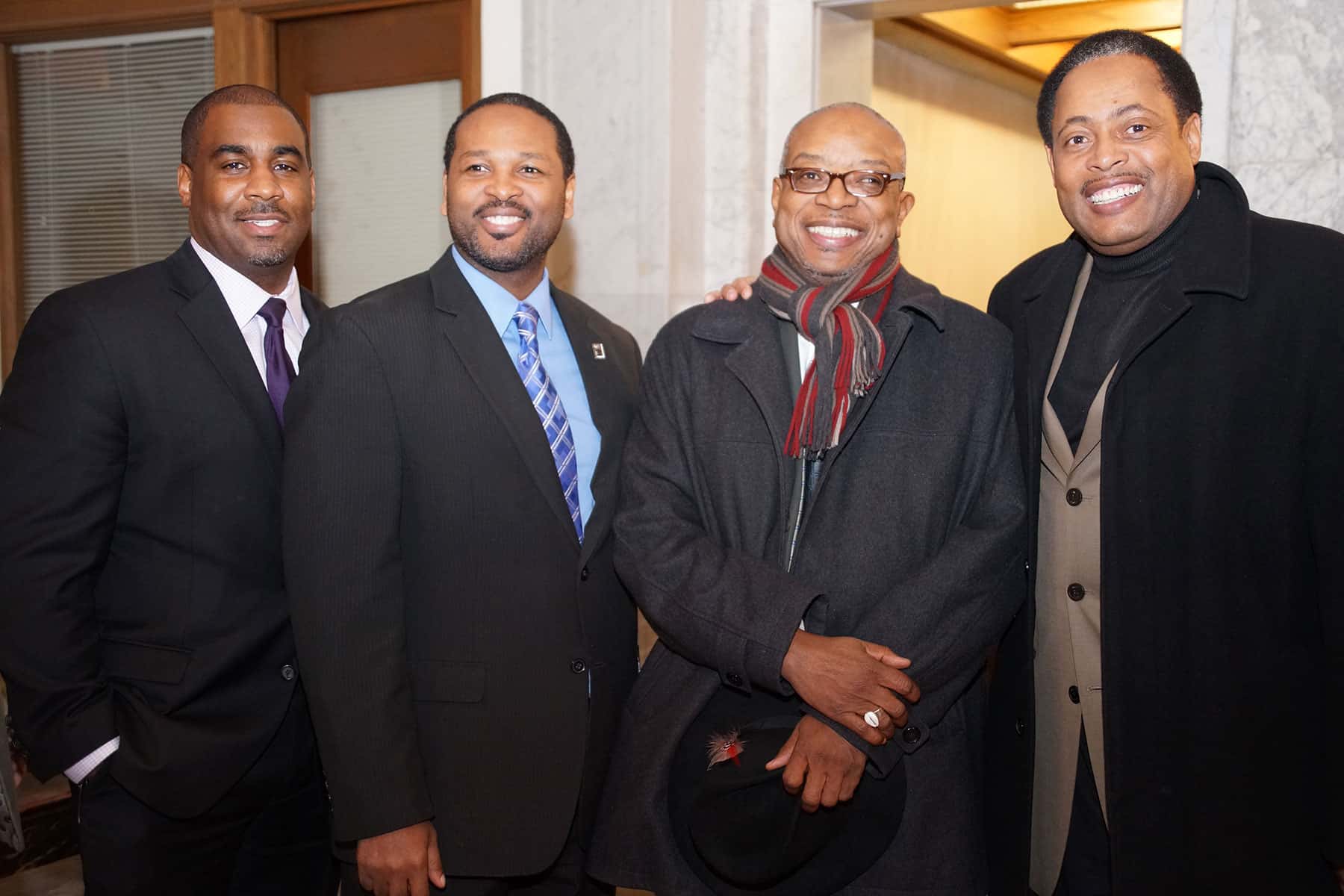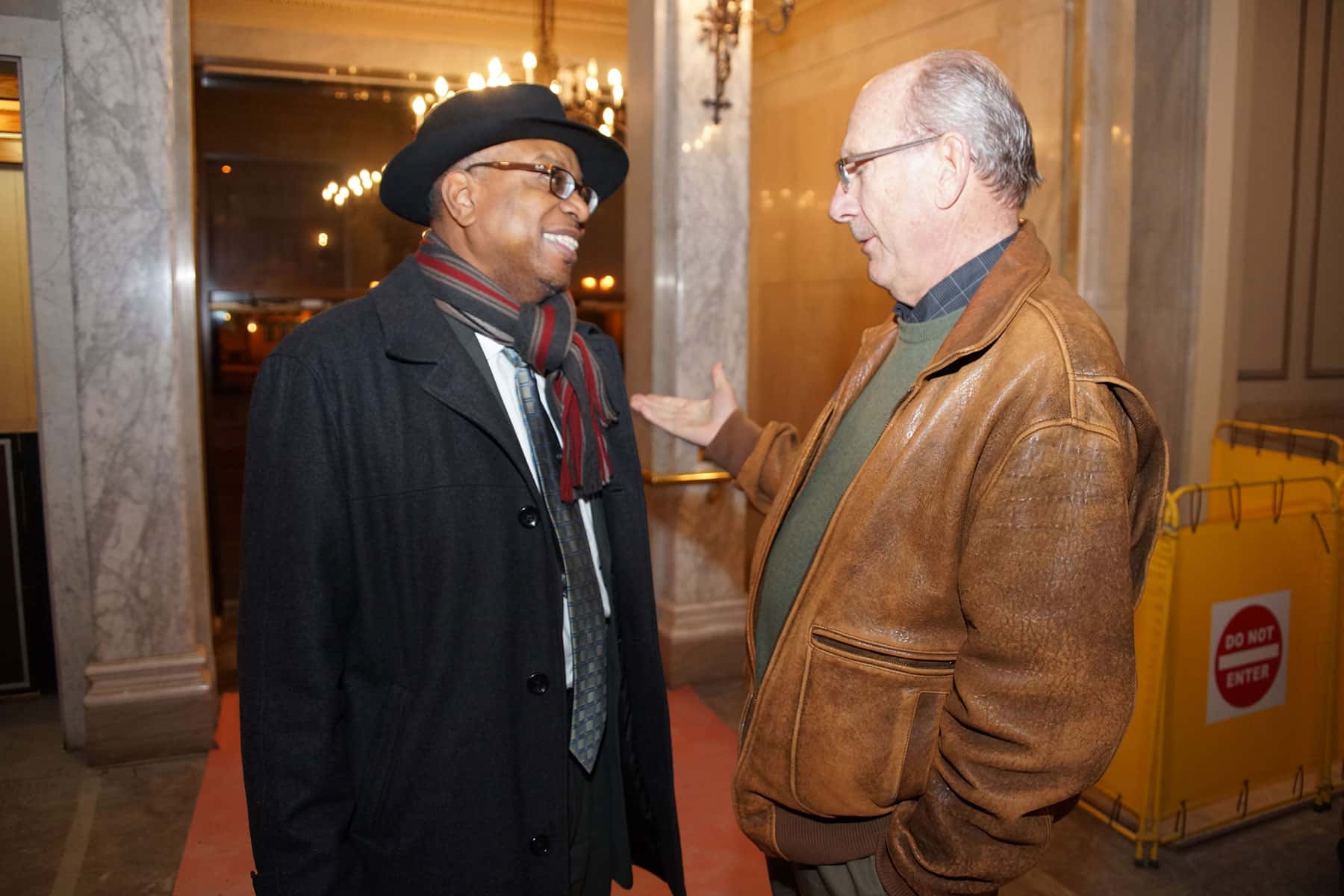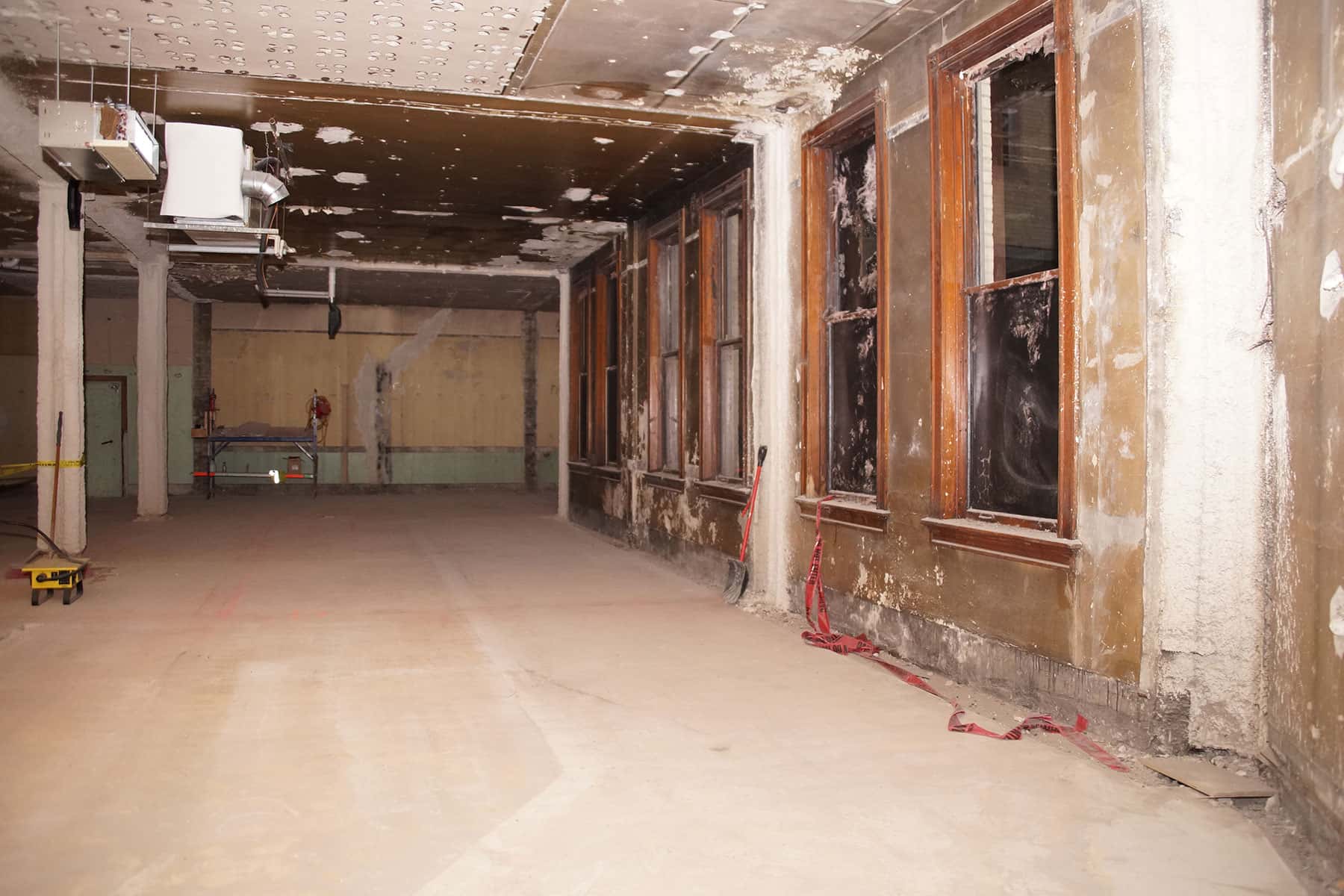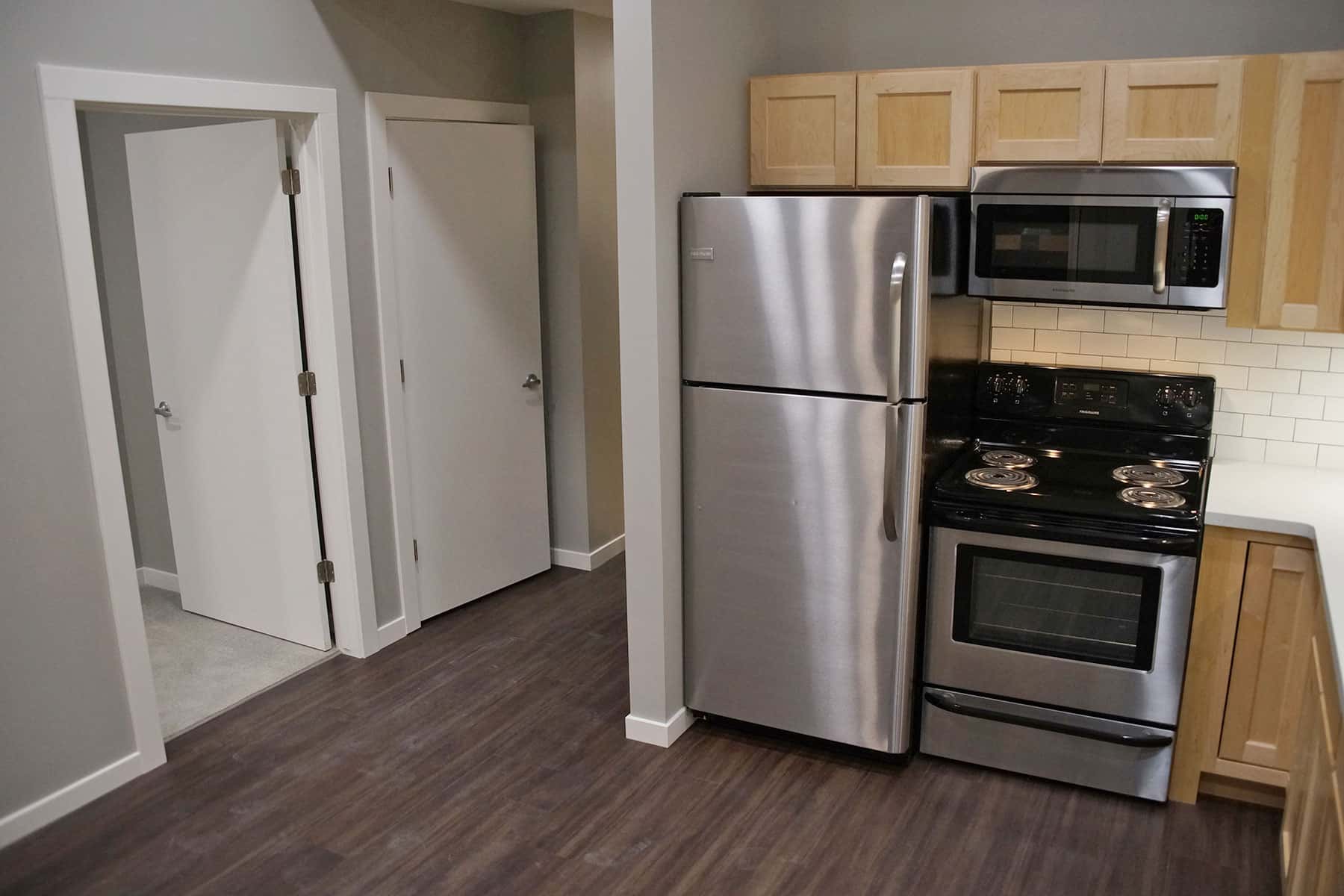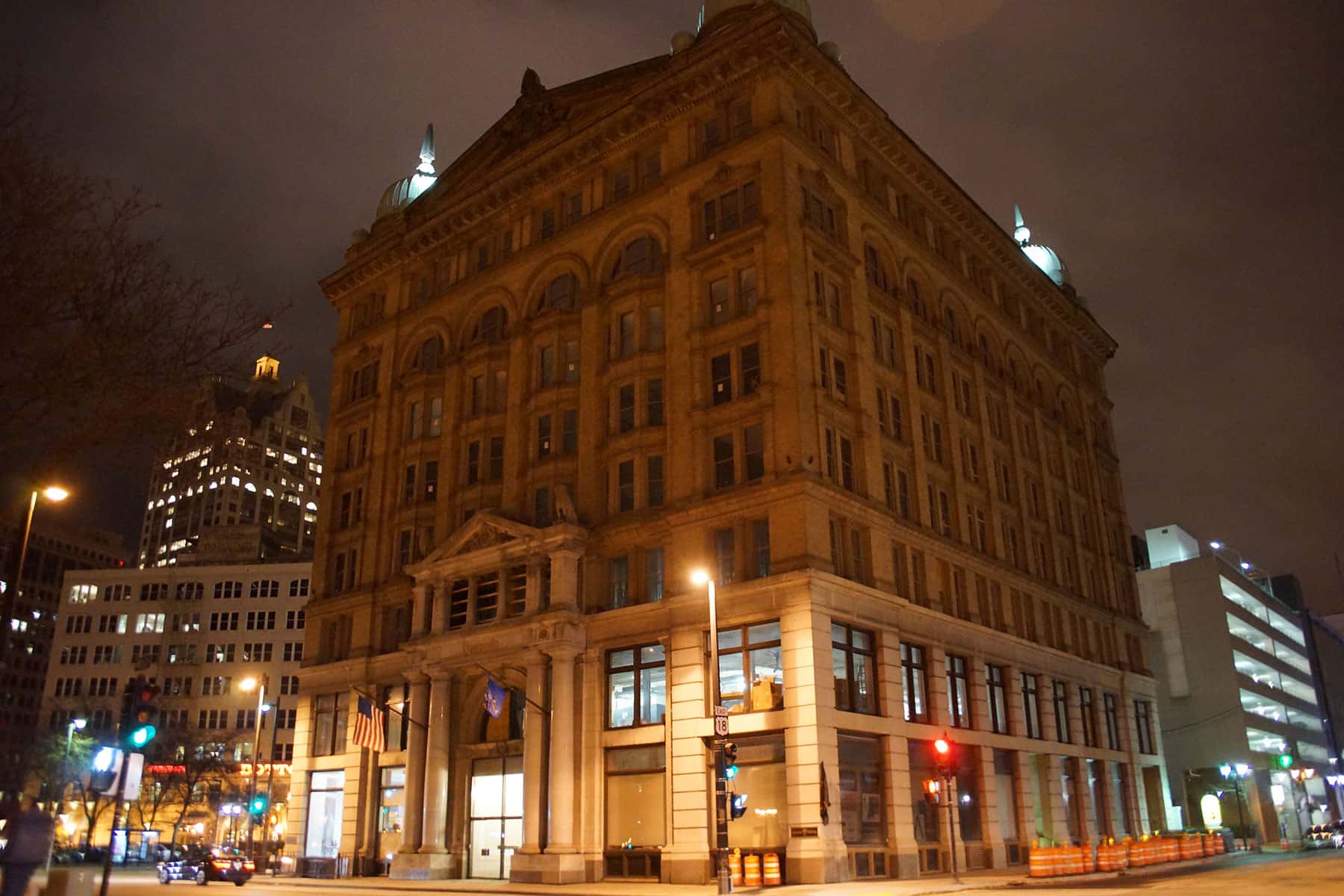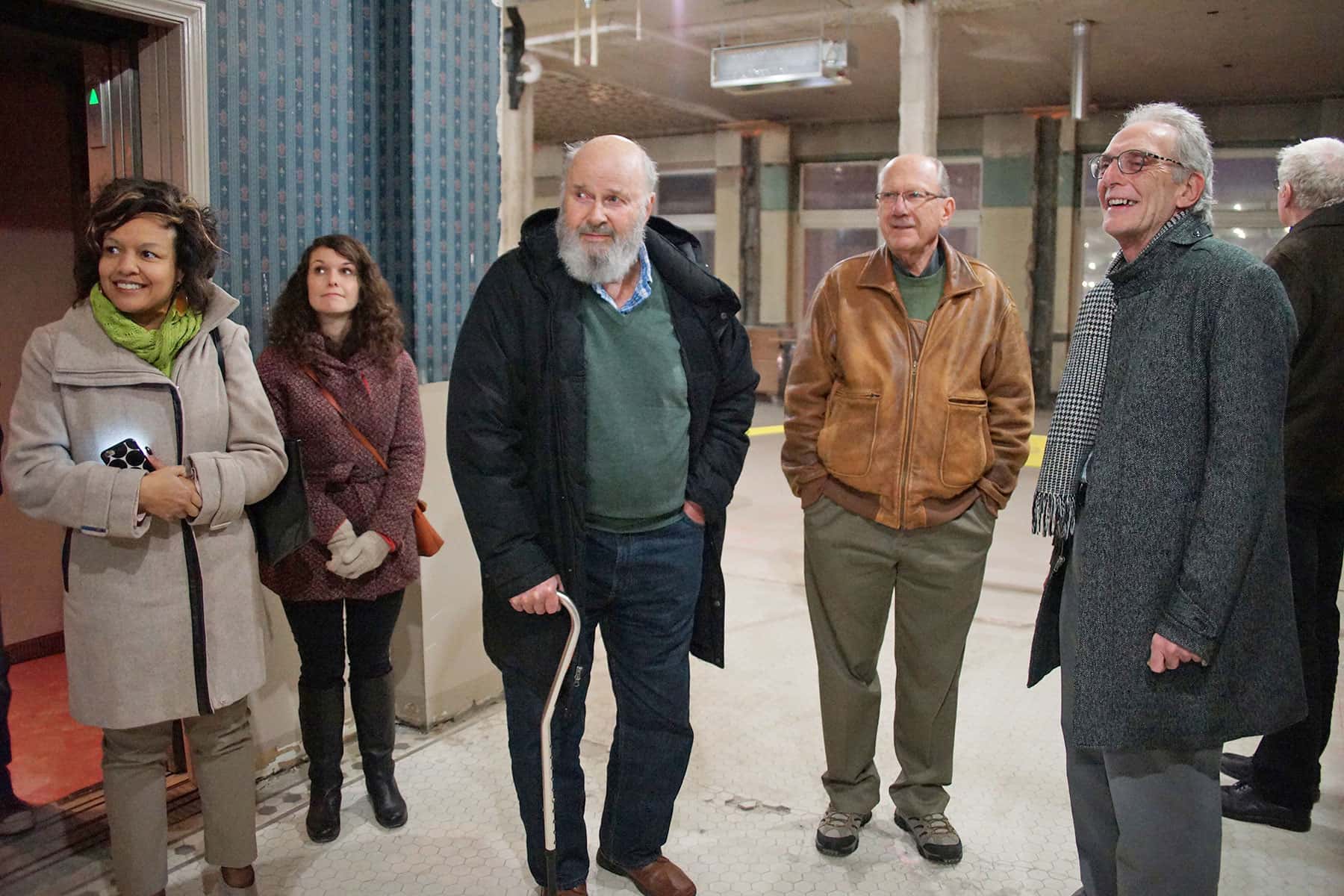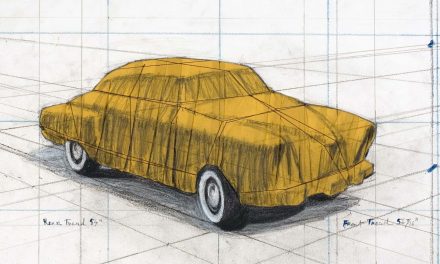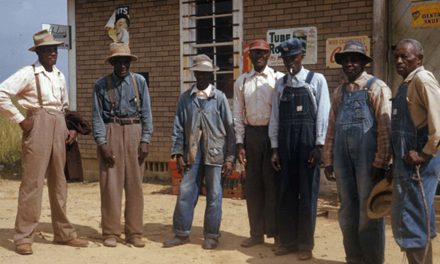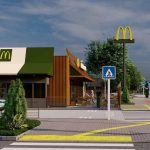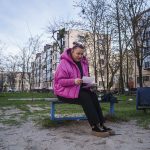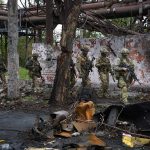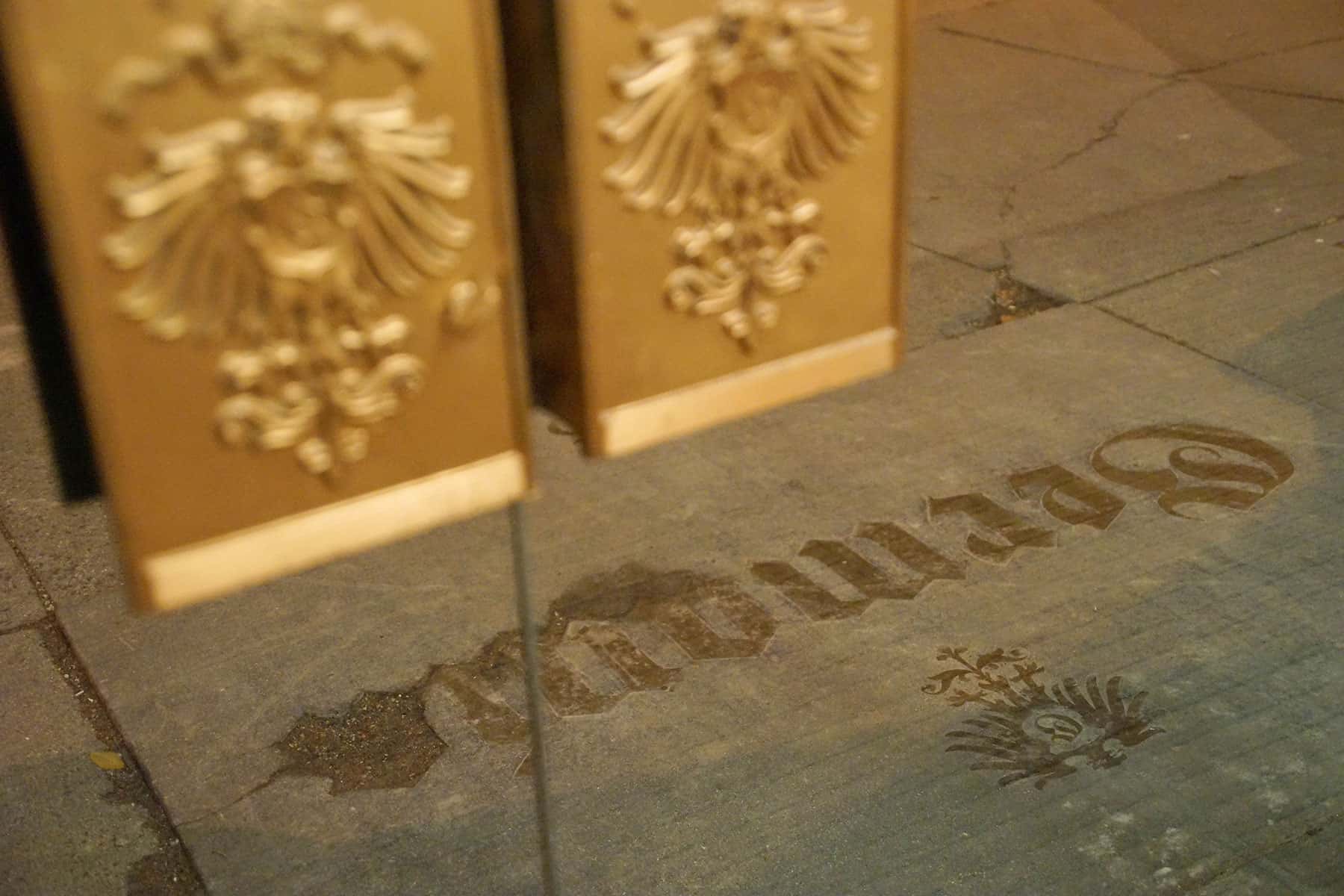
Restoration progress was briefly revealed during a private tour for project partners and supporters at the Germania Building recently.
The general public remained unaware for years of the terrible deterioration within the iconic 8-story building at North Plankinton Avenue and West Wells Street.
“The windows were ready to blow out, the sidewalk and street were falling in, the elevators were damaged or failed inspection, and the roof was leaking,” explained Mark Klann, Director of Construction and Capital Improvements for Cardinal Capital Management, Inc. “So we focused on those things, once we took over the construction part of the project, because the city was ready close the building.”
Designed by German-trained architects Schnetzky & Liebert, at the time of construction the Germania was the largest office building in the city of Milwaukee. On its 120th anniversary this year, it remains one of the oldest structures downtown, built a year after City Hall.
“When we looked at projects that could be true to the community and offer a benefit, we never found a project like Germania. It’s not just bricks and mortar. We do build buildings, but we prefer to build opportunities. We prefer the build up people, we prefer to give them hope,” said Kalan Haywood Sr., who has led the project as Founder and President of the Vangard Group. “This building means so much to Milwaukee, and we are proud to be part of the team bringing it back to life.”
With the feeling of hope throughout areas of Milwaukee hitting an all-time low, many of those involved with the project were very excited about it. Not just a result of the rejuvenation that the project was bringing to the area, but as a platform for people to connect and prosper across all levels of Milwaukee society.
“Only in America could you have an African-American developer, with a mixed ethnic team, revitalizing what was once a German-American capital,” said Wyman B. Winston, Executive Director of the Wisconsin Housing and Economic Development Authority (WHEDA).
WHEDA has been a big supporter of the effort since Haywood developed the plan. Its financial assistance was vital to a process that depended on a mix of funding, including Historic Credits and Tax Incentive Finance (TIF). Each of the programs also required construction work to comply with a different sets of mandatories.
“We will be using city steam and hot water boiler heat to make it the building very efficient,” said Klann, who was born and raised in Milwaukee and grew up on 23rd and Center. “So it’s good for me to see preservation going on, because I love all these old buildings.”
The restoration plans also came with unique issues and political considerations that were particular to the Westown building itself. Overcoming them required a lot of help and support from numerous organizations and individuals.
“There were other things that could have been done to make money. Kalan pushed against all those struggles, and I’m honored to work with him and be involved in his project,” said Erich Schwenker, President of Cardinal Capital Management, Inc. “In our vision, we hope that people can live together and live well, across all those lines and fears that separate us, in a building with 50% market rate and 50% affordable income housing.”
With a mission statement of “Delivering Financial and Social Value,” Cardinal Capital Management, Inc. saw another one of their projects completed in October, with the opening of the Thurgood Marshall Apartments as Wisconsin’s first New Harm Reduction housing development.
“The Germania is as sound of a building as you’ll ever see in Milwaukee. It will do our city an honor for what it is, and what this building will become for all of us in the years ahead,” added Schwenker.
Author, tour guide, and historian Bob Giese offered some details about George Brumder, the building’s original owner, with his great-grandson, E.J. Brumder in attendance. In the 1880s, German was so prominently spoken in Milwaukee that it was not uncommon to see stores along Wisconsin Avenue with signs saying ‘English spoken here.’
“George Brumder’s father told his relatives, ‘of all my children, he will be the least to succeed.’ How wrong that was.” said Giese.
Brumder and his wife Henrietta purchased a printing press from a Lutheran Church and turned a weekly German-language newspaper into a daily edition called the “Germania.” As he bought up German-language newspapers across the country, Brumder commissioned the building in 1896 as the seat of his publishing empire. But his phenomenal success changed due to World War I, that saw local resentment from other European immigrants over the conflict with Germany.
“The name of the building had to be changed from Germania to Brumder, and it stayed that way until 1981.” said Giese. “Then a lot changed after World War II, the Germans here were Americanized, and German-language newspapers went out of fashion. This building was converted into different uses over time. But today it is still a beautiful building, with beautiful things being done to it.”
While Milwaukee has traditionally pointed to new buildings as symbols of its modernization, the Germania’s restoration work is key to actual social progress. Being exposed to different kinds of people in every direction is what the community has needed for inspiration.
“Coming from a blue-collar family, with a doctor living across the street, I understand the impact of this project. Being able to know that doctor, having him know my parents, building relationships with his kids, gave me a completely different perspective,” said Winston. “Then I see kids now who live in the city, and who have never even been to the lakefront.”
The first floor of the mixed use building will be commercial space. When Germania opens for renting by July 1, 2017, it will consist of 46 market-rate apartments and 44 units for people with low incomes. Of the 90 total units, 55 will be two-bedroom configurations.
“We believe this is now the blueprint for this type of building,” Haywood said. “Germania is a template for how historical buildings can be repurposed.”
© Photo
Lee Matz
Read the article and view the photo essay that were produced as companion features for this news report.

